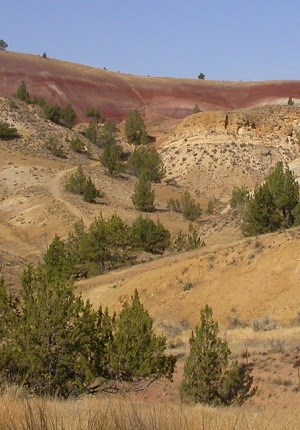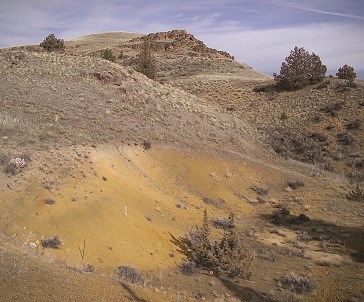|
The Clarno Formation Outcropping widely throughout central Oregon, the Early to Middle Eocene aged Clarno Formation includes around 1800 m of deposits. It consists of both volcanic rocks and volcanogenic sedimentary rocks, ranging in age from approximately 54 to 39 Ma. The Clarno Formation includes lava flows, tuffs, lahars, mudstone, and conglomerates. These rocks formed within an extensional basin or series of basins near sea level in the Eocene. 
NPS Photo From Palisades to Paleosols... 
NPS Photo A small portion of these sequences were formed when massive walls of mud, ash, and debris came crashing down the slope of a volcano, engulfing the surrounding forest and its animal inhabitants. Over time, the mud, silt, soil, and rocks of these lahars, along with wood, nuts, seeds and leaves from the forest floor, were cemented together by silica. This cementing, or hardening of the rocks, was possibly aided by minerals from nearby hot springs. This combination left a solid cliff made up of sand, silt, and clay that entomb the jumbled remains of a forest, now called Clarno Palisades.

NPS Photo The Hancock Mammal Quarry Fossils from the Clarno and Hancock Mammal Quarry Assemblages 
|
Last updated: December 14, 2017
